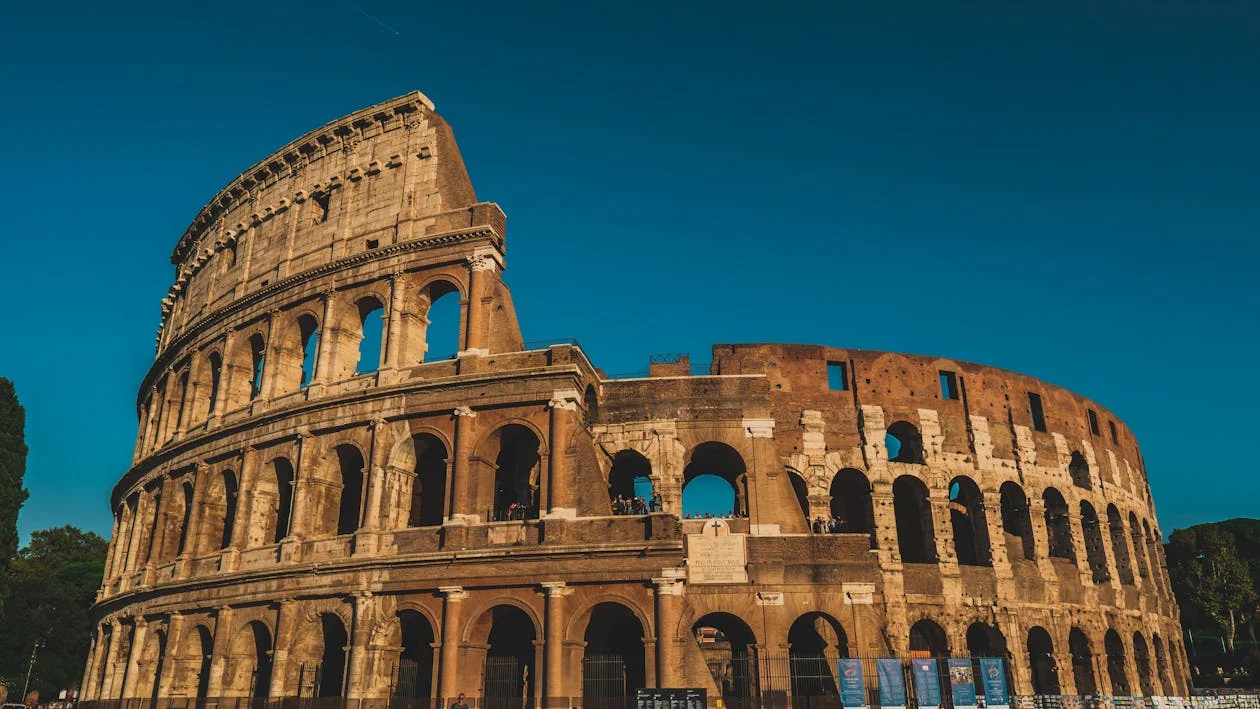Rome, the Eternal City, is a treasure trove of history, architecture, and culinary delights. When planning your trip, choosing the right place to stay can make all the difference. Here’s a comprehensive guide to help you find the best places to stay in Rome, whether you’re a first-time visitor, a seasoned traveler, or a backpacker on a budget.
All roads indeed lead to Rome, but theirs also is a more mystical destination, some bourne of which no traveler knows the name, some city, they all seem to hint, even more eternal.
Richard Le Gallienne
Where to Stay in Rome: A Friendly Guide to the Eternal City’s Coolest Neighborhoods
Rome isn’t just a city—it’s a collection of stories, told street by street, gelato by gelato, and yes, piazza by piazza. Choosing where to stay in Rome can shape your entire trip, and trust us—each neighborhood has its own unique vibe.
Whether you’re a first-timer tossing coins into the Trevi Fountain, a foodie on a carbonara mission, or someone who just wants to wander cobblestone streets with no plan at all (we see you, flâneurs 👀), there’s a Roman rione for you.
Centro Storico – Best for First-Time Visitors & Romantics
If you’re wondering where the best places to stay in Rome are for your first trip, Centro Storico is a clear winner. This is the Rome you’ve seen in films and postcards—where every alley leads to something iconic. From the Pantheon to the Trevi Fountain and Piazza Navona, everything is within walking distance. It’s beautiful, atmospheric, and made for aimless strolling.
That said, you’ll be sharing the magic with plenty of other tourists—and paying a little more for the location. But if being in the heart of it all is your dream, you won’t regret staying here.
✔️ Pros:
- Super central—most major attractions are steps away
- Perfect for walking everywhere
- Full of restaurants, cafés, piazzas, and photo ops
⚠️ Cons:
- Can be noisy at night depending on where you stay
- Very touristy and crowded, especially midday
- Higher accommodation prices
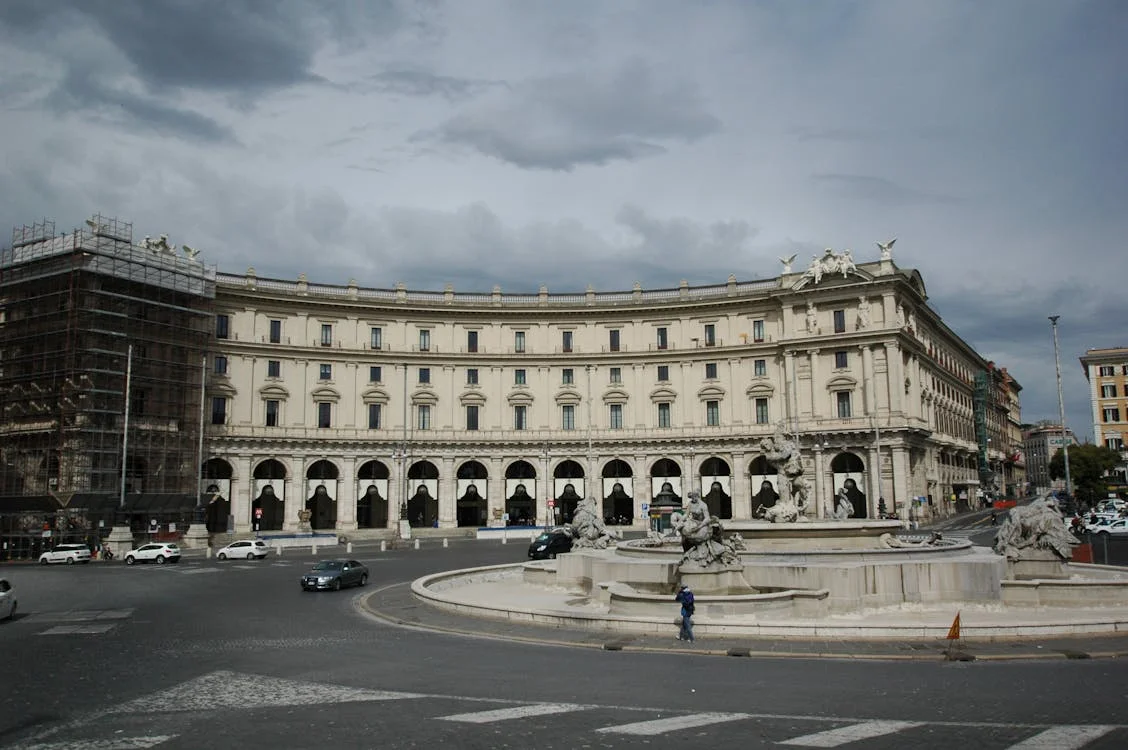
Image: Centro Storico
Trastevere – Best for Night Owls, Foodies & Cobblestone Charm Seekers
If you want to stay somewhere with personality, Trastevere is your spot. Just across the Tiber River, this neighborhood blends old-world charm with a lively, modern spirit. Picture narrow cobblestone lanes, ivy-covered buildings, and tiny piazzas that come alive at night. It’s stylish, artsy, and effortlessly cool.
Trastevere is one of the best places to stay in Rome if you love evening strolls, spontaneous wine bars, and that “local, not touristy” vibe. But heads up—it’s not always as peaceful as it looks. By night, the quiet charm turns into a lively scene full of music, chatter, and street performances.
✔️ Pros:
- Great nightlife with bars, cafés, and lively piazzas
- Lots of local character and fewer tourist crowds (during the day)
- Beautiful for photos—especially around golden hour
⚠️ Cons:
- Can get noisy at night, especially on weekends
- Some areas may feel a bit far from major tourist landmarks
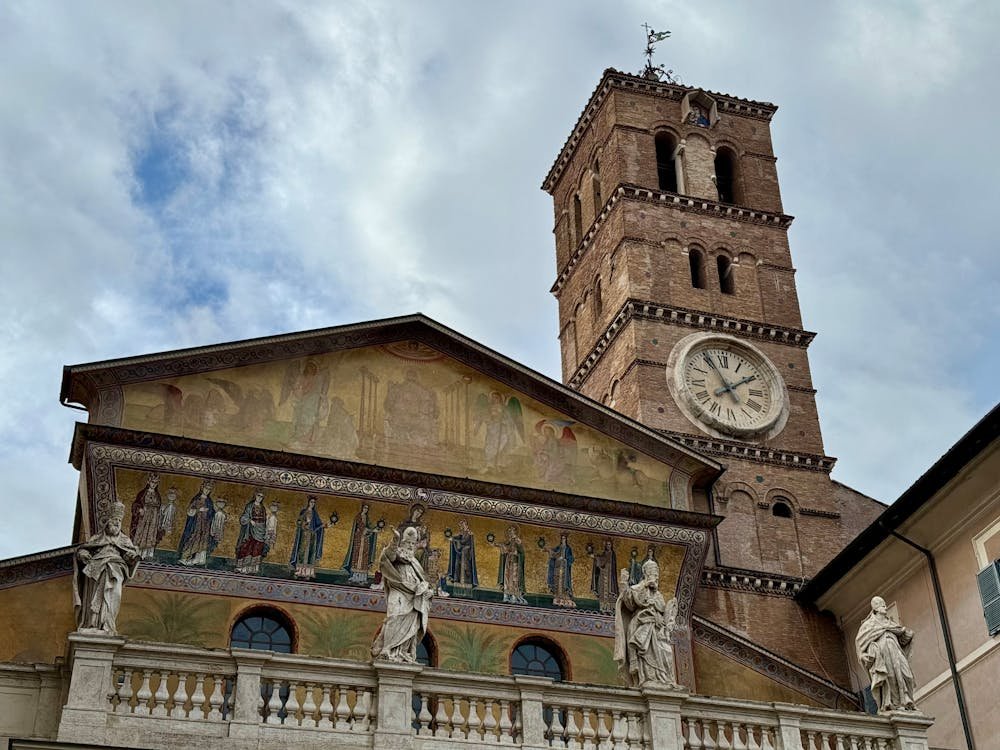
Image: Trastevere
Monti – Best for Trendsetters, Creatives & Colosseum-Loving Adventurers
If you want a stay that’s central but not cliché, head to Monti. Just a short walk from the Colosseum, this neighborhood mixes ancient cobblestones with boho boutiques, vintage shops, and cafés full of artists on laptops and espresso.
Monti feels like the cool cousin of Rome’s tourist zones—a little less polished, a little more lived-in. It’s stylish without trying too hard, and one of the best places to stay in Rome if you want that balance of history and hip.
✔️ Pros:
- Minutes from the Colosseum and Roman Forum
- Packed with local bars, indie shops, and cafés
- Walkable, photogenic, and full of personality
⚠️ Cons:
- Trendy means prices can be higher
- More tourists are discovering it, so it’s not a secret anymore
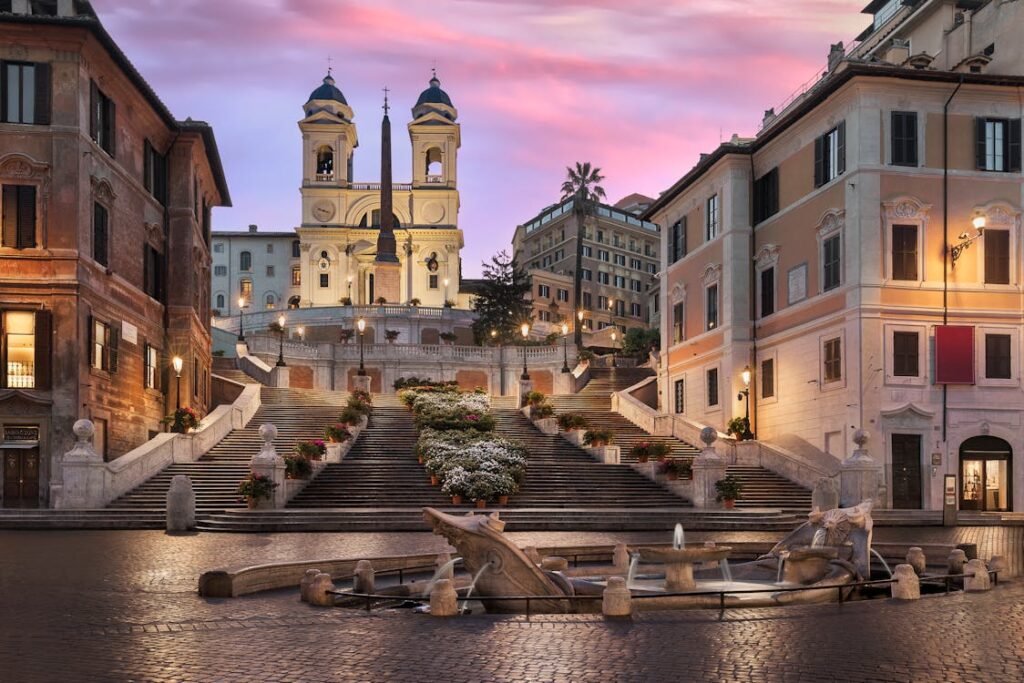
Image: Piazza di Spagna
Prati – Best for Vatican-Goers & Travelers Who Prefer a Calmer Pace
Looking for a quieter side of Rome that’s still close to the action? Prati is your match. This elegant, residential neighborhood sits just a short walk from St. Peter’s Basilica and the Vatican Museums, but without the chaos of the city center.
It’s known for wide streets, Art Nouveau buildings, and a laid-back, local vibe. You’ll find great restaurants, polished boutiques, and some of the best gelato in the city—all without bumping elbows with tour groups every five minutes. If you want to stay somewhere safe, clean, and just a bit off the tourist trail, Prati is one of the best places to stay in Rome.
✔️ Pros:
- Calm, clean, and safe atmosphere
- Great location for visiting the Vatican
- Excellent food and gelato spots loved by locals
⚠️ Cons:
- A bit quieter at night
- Slightly removed from ancient Rome sights like the Forum or Pantheon

Images: Vatican Museums
Testaccio – Best for Foodies Craving the “Real” Rome
If you’re the kind of traveler who chases flavors, not crowds, Testaccio is your secret weapon. Tucked just outside the tourist core, this gritty-cool neighborhood is where authentic Roman cuisine was born—and where locals still gather for long lunches, strong espresso, and daily market runs.
Testaccio isn’t about glitz. There’s no Pantheon here, no fountains with coins, but what you get is raw charm: street art, traditional trattorias, and a deep sense of community. It’s one of the best places to stay in Rome if you care more about food than selfies—and want to feel like a local, not a guest.
✔️ Pros:
- Legendary food scene—think carbonara, offal, and markets
- Great value for money compared to tourist hubs
- Quiet, residential, and deeply Roman
⚠️ Cons:
- Not as polished or postcard-pretty as central neighborhoods
- Further from major attractions, but well connected by metro
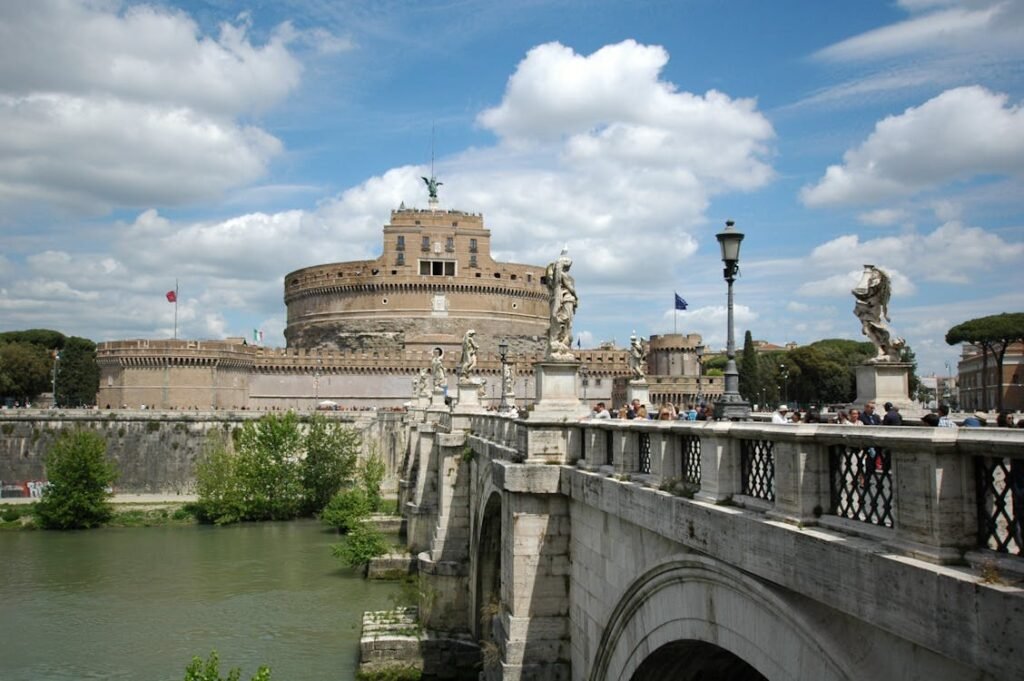
Image: Castel Sant’Angelo and Bridge
🏛️ Into history and hidden gems? Check out the best places to visit in Italy for history lovers — from ancient ruins to secret art spots.
Staying Connected in Rome with Gohub eSIM
Let’s face it: when you’re wandering through ancient ruins, trying to find that hidden trattoria, or booking a last-minute Colosseum tour, you need reliable internet. That’s where Gohub eSIM makes your Roman holiday smoother than a scoop of stracciatella.
No more fumbling with local SIM cards, surprise roaming fees, or dodgy café Wi-Fi. With Gohub eSIM, you’re connected from the moment you land—so you can navigate, share, book, and explore with total freedom.
Why Gohub eSIM is Your Best Travel Companion in Rome:
- Instant Setup, No SIM-Swapping: Just scan a QR code, and you’re ready to go—no physical SIM, no tech stress. Activate it even before you board your flight.
- Reliable Coverage, Even in Narrow Alleys: Whether you’re deep in a cobblestone side street in Trastevere or checking Vatican hours from your apartment in Prati, Gohub keeps you online.
- Budget-Friendly Data Plans: Forget overpriced roaming. Gohub offers affordable, flexible data packages with zero hidden fees—so you spend more on pizza, less on your phone bill.
- 24/7 Multilingual Support: Something not working? Our team’s ready to help, anytime, anywhere. It’s like having a tech-savvy travel buddy on speed dial.
Accommodation Options in Rome: From Bougie to Budget
Whether you’re living your “Eat, Pray, Love” fantasy or just need a clean bed after a full day of gelato-fueled sightseeing, Rome’s got a place for you.
From boutique charm to budget-friendly bunks, here’s how to pick your perfect Roman home base:
Hotels & Motels: Comfort Meets Convenience
If you’re after room service, plush pillows, and maybe a rooftop view of the Vatican—hotels are your go-to.
- Great for couples, business travelers, and short stays
- Ranges from luxury 5-stars to boutique design gems
- Often include breakfast, concierge services, and daily housekeeping
Note: In Rome, even 3-star hotels in the historic center can feel special—just book early, especially in high season.
B&Bs & Charming Inns: A Local Touch
Want to feel like you’re staying with a (very stylish) Roman auntie? Try a Bed & Breakfast or locanda.
- Cozy, personal, and often run by locals
- Expect fresh-baked breakfasts and insider tips from your host
- Ideal for solo travelers or couples who want that “at home in Rome” feel
GOHUB Tip: Ask your host about their favorite trattoria—it’ll likely be better than anything you find on TripAdvisor.
Short-Term Rentals: Your Roman Home Away from Home
Perfect for families, friend groups, or digital nomads, Airbnbs and apartment rentals give you space to stretch out.
- Kitchen + living room = total flexibility
- Can be great value if you’re staying more than a few days
- Let you live like a local, even if it’s just for a weekend
Pro move: Pick up wine, cheese, and fresh pasta at the market, and enjoy your own Roman dinner in.
Hostels: Social & Budget-Friendly
Not just for party people! Rome’s hostels range from basic bunks to design-forward hybrid hostels with private rooms.
- Great for solo travelers, backpackers, and Gen Z jetsetters
- Often located in vibrant neighborhoods like Trastevere or Monti
- Bonus: built-in community + sometimes free walking tours
GOHUB Suggests: Look for hostels with coworking spaces or rooftop lounges—budget doesn’t have to mean boring.
Apartments: Independent Living in the Eternal City
Need your own space to cook, chill, and plan tomorrow’s ruins run? Apartments offer longer-term comfort and autonomy.
- Ideal for remote workers or longer stays
- You’ll get your own kitchen, living space, and often laundry
- Bonus: You feel less like a tourist, more like a temporary local
Local vibe tip: Shop at outdoor markets like Campo de’ Fiori and live your best pasta-making life at home.
Recommended Hotels by Neighborhood
From romantic rooftops to stylish boutique hideaways, Rome’s hotel scene is as varied as its espresso orders. We’ve handpicked standout stays in each neighborhood so you can match your vibe to your room key—no matter your travel style.
Trastevere: Local Charm Meets La Dolce Vita
- Horti 14 Borgo: Modern design meets lush garden retreat. A peaceful oasis right in the heart of the buzz.
- Niki’s Collection Trastevere: Chic, stylish, and perfectly placed—ideal if you want to sip Aperol and stroll home in minutes.
- Villa Agrippina Gran Melia: Total luxury. A 5-star stay with a seasonal pool and Vatican views. For when you’re feeling extra..
Centro Storico: Postcard Rome at Your Doorstep
- CitizenM Isola Tiberina: Super modern, tech-savvy, and budget-smart—ideal for digital nomads and minimalist travelers.
- Casa Pietra: A charming guesthouse that feels like your stylish Roman cousin’s apartment—location = unbeatable.
Monti: Hip, Historic, and Full of Soul
- Salotto Monti: Mid-range perfection, walking distance to Colosseum, and rooftop breakfast views? Yes, please.
- Fifteen Keys Hotel: Small, intimate, and effortlessly cool. Boutique luxury with heart.
Prati: Vatican Views, Peaceful Vibes
- Hotel Rovere: Clean, calm, and just minutes from St. Peter’s. Great for early Vatican tours without the chaos.
- Starhotels Michelangelo Rome: Contemporary comfort just a stone’s throw from the Vatican walls. Big hotel polish with personal warmth.
Testaccio: Foodie-Focused and Underrated Cool
- San Anselmo: Elegant, romantic, and set in a 19th-century villa. Perfect for couples looking for peace + pasta.
- Gasometer Urban Suites: Spacious, sleek, and great value—especially if you want easy access to Ostiense train station and Testaccio’s food scene.
Must-See Attractions & How to Explore Rome Like a Pro
Any Rome travel guide 2025 would be incomplete without the landmarks that define the Eternal City. From ancient arenas to quiet piazzas, these are the spots you simply can’t miss—and the smartest ways to see them like a pro.
Iconic Landmarks: No Rome Trip is Complete Without These
If you’re planning your first visit, these are the must-see attractions in Rome that define the city’s character. They’re world-famous for a reason—each one tells a piece of the Eternal City’s story, and seeing them in real life is nothing short of magical.
Colosseum & Roman Forum — Timeless Icons of Rome
If you’re making a list of the must-see attractions in Rome, the Colosseum belongs at the very top. Step into this ancient arena and picture gladiators, roaring crowds, and the drama of Roman history.
Right next door, the Roman Forum offers a different kind of magic—walk among crumbling temples, arches, and basilicas where emperors once stood.
🧠 Pro Tip:
Skip the long lines and get the full story by booking a skip-the-line guided tour or entry pass online. It’ll save time and add layers of meaning to every stone you pass.
Vatican City – The Spiritual & Artistic Heart of Rome
No list of must-see attractions in Rome is complete without a visit to Vatican City. This tiny independent state packs a massive cultural and spiritual punch. Here you’ll find St. Peter’s Basilica, the world-famous Vatican Museums, and of course, Michelangelo’s breathtaking Sistine Chapel.
It’s a place that inspires awe—whether you’re gazing up at the dome or standing beneath that iconic painted ceiling. Even if you’re not religious, the scale, detail, and beauty of this place will leave you speechless.
🧠 Pro Tip:
Arrive early to beat the crowds—or check for special evening entry options, which offer a more peaceful and magical experience.
Pantheon – A 2,000-Year-Old Masterpiece That Still Stuns
Among all the must-see attractions in Rome, the Pantheon stands quietly confident. It’s nearly 2,000 years old—and still standing tall with its giant granite columns, perfect proportions, and the famous oculus (a massive open eye in the ceiling that lets in sunlight—and rain!).
Originally built as a temple to all gods, it now serves as a church and resting place of artists and kings. Step inside and look up—you’ll understand why this structure still inspires architects today.
🧠 Pro Tip:
Admission is now ticketed, but still low-cost or free for EU residents. Visit in the morning for softer light through the oculus.
Trevi Fountain & Spanish Steps – Classic Rome Moments You Can’t Miss
These two landmarks are high on every list of must-see attractions in Rome—and for good reason. The Trevi Fountain is pure cinematic magic: throw in a coin (right hand over left shoulder!) and legend says you’ll return to Rome.
Just a short walk away, the Spanish Steps offer 135 reasons to pause, sit, and people-watch—especially at sunset when the city turns golden.
🧠 Pro Tip:
Both spots are extremely crowded during the day. Want that postcard moment without the crowds? Come at sunrise—it’s quieter, cooler, and 10x more magical.
Hidden Gems: Rome’s Best-Kept Secrets
Beyond the crowds and postcard sights, there’s another side to the Eternal City—quieter, quirkier, and full of surprises. These hidden gems in Rome will reward curious wanderers with unexpected views, secret gardens, and stories most tourists miss.
Keyhole of Rome (Aventine Hill):
Looking for one of the most magical hidden gems in Rome? Head to Aventine Hill, walk up to the Priory of the Knights of Malta, and peek through a small, unassuming keyhole. What you’ll see is pure real-life sorcery: St. Peter’s Basilica perfectly framed by a tunnel of manicured greenery. No editing needed.
🧠 Pro Tip:
Early morning or golden hour gives the most dreamy light—and fewer people waiting their turn for a peek.
Orange Garden (Giardino degli Aranci) – A Peaceful Viewpoint Above the City
Just steps from the famous keyhole on Aventine Hill, the Orange Garden is one of the most peaceful hidden gems in Rome. Locals come here to relax under the shade of orange trees, enjoy the breeze, and take in one of the best skyline views in the city—without the tour groups or selfie sticks.
🧠 Pro Tip:
Bring a snack or coffee and settle in on a bench. Sunset from here? Quietly unforgettable.
Galleria Borghese – Renaissance Art in a Roman Jewel Box
Tucked inside the beautiful Villa Borghese gardens, this gallery is a true hidden gem in Rome—and an absolute dream for art lovers. Inside, you’ll find masterpieces by Bernini, Caravaggio, Raphael, and more, all displayed in rooms so ornate they rival royal palaces (or your grandma’s fanciest china cabinet 😉).
🧠 Pro Tip:
You must reserve tickets in advance—entry is limited and time-slotted. But that just means you get to enjoy the art without the usual museum madness.
Appian Way (Via Appia Antica) – Ancient Roads, Quiet Rewards
One of the oldest roads in Rome, the Appian Way is where history and nature collide. This off-the-beaten-path gem is perfect if you’re craving a break from busy piazzas. Lined with aqueducts, catacombs, pine trees, and Roman ruins, Via Appia Antica is like walking (or biking) straight through time.
🧠 Pro Tip:
Rent a bike near the start of the road and pack water—a half-day ride or stroll here is peaceful, photogenic, and refreshingly local.
Basilica di San Clemente – One Church, Three Time Periods
Few hidden gems in Rome are as mind-blowing as San Clemente. From the outside, it looks like just another beautiful church—but head downstairs, and you’ll descend through three layers of Roman history: a 12th-century basilica, a 4th-century church, and beneath that, a 1st-century Roman house and pagan temple. It’s like walking down through time.
🧠 Pro Tip:
Bring a light jacket—it gets chilly underground. And take your time reading the plaques; this place tells stories no guidebook can fully explain.
Getting Around Rome: Smart Ways to Explore
Rome is a city where wandering is an art, but a little planning helps you cover more ground (and more gelato stops).
Walking
- Rome’s historic center is compact—walk whenever you can.
- Wear comfy shoes. Cobblestones are beautiful… and brutal.
Public Transport
- The Metro (Lines A, B, C), buses, and trams get you just about anywhere.
- Get a Roma Pass or use contactless cards. Download the Moovit or Rome2Rio app to stay on track.
Taxis & Ride-Sharing
- Official taxis are white with a meter—avoid unmarked cars.
- Uber works, but is limited (and usually more expensive). Great for late nights or airport runs.
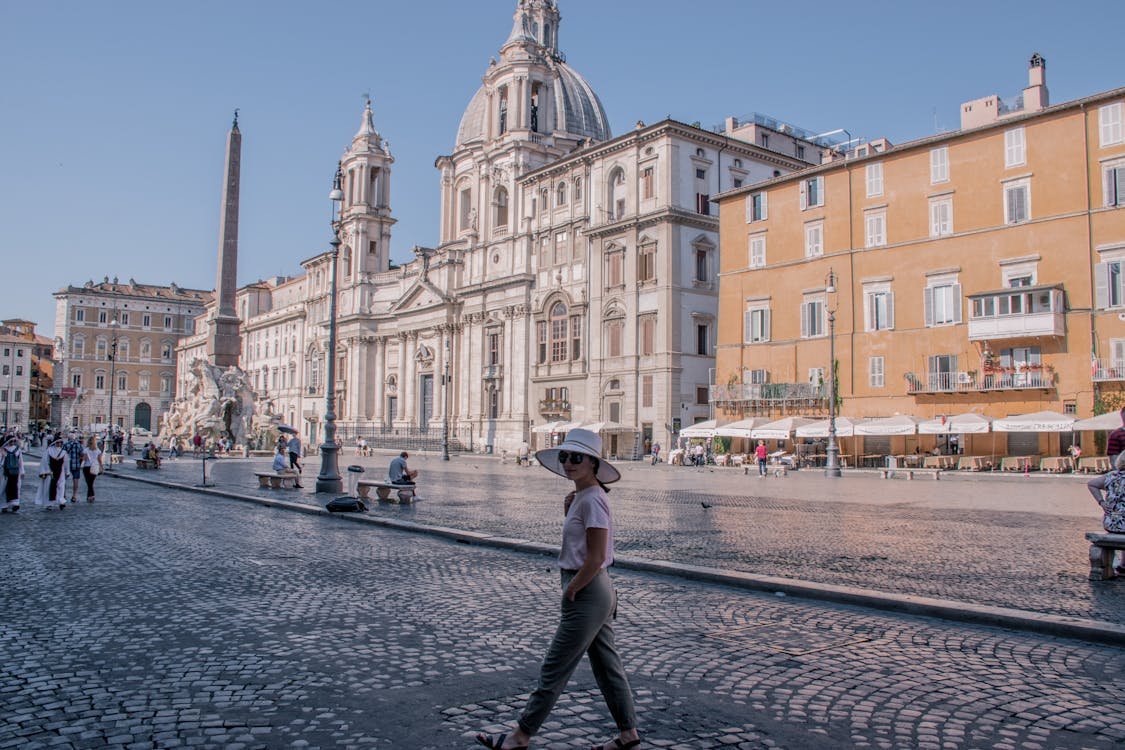
Image: White Dome Building
Immersing Yourself in Roman Culture: Live the City, Don’t Just Visit It
Rome isn’t just a place you see—it’s a place you taste, feel, and flow with. The best way to experience it? Put down the map, follow the scent of garlic in the air, and let the city pull you into its rhythm.
Here’s how to soak in Roman culture like a local (minus the jetlag and with all the pasta):
Food & Drink: Your Entry Ticket to the Roman Soul
In Rome, food isn’t just fuel—it’s a way of life. You’ll find entire philosophies behind a forkful of pasta.
Must-try dishes:
- Cacio e pepe – simple, peppery, cheesy perfection
- Carbonara – NO cream. Just egg, guanciale, pecorino, black pepper.
- Supplì – fried rice balls filled with melty mozzarella. Street food gold.
Where to eat:
- Trattorias – Think grandma-cooked, candle-lit, no-frills bliss.
- Local markets – Grab a porchetta panino or fresh mozzarella and picnic in a piazza.
Go deeper with a food tour
Book a local-led Rome food tour to uncover hole-in-the-wall spots, secret bakeries, and the stories behind every sauce. Bonus: no food regrets.
Explore Local Markets: Where Daily Life Happens
- Testaccio Market: Rome’s foodie playground. Locals shop here for produce, meats, cheeses—but also grab espresso, pizza al taglio, or handmade pasta. Authentic, affordable, unforgettable.
- Campo de’ Fiori: One of Rome’s most famous morning markets—perfect for fresh flowers, spices, and colorful snapshots. Come early before it gets touristy.
GOHUB Tip: Markets are best in the morning. Bring a tote bag, cash, and an appetite.
Cultural Etiquette: Blend In Like a (Stylish) Local
Rome welcomes you—but it’s even better when you honor the rhythm of local life.
- Dress respectfully, especially in churches—no bare shoulders or short shorts when visiting sacred sites like St. Peter’s or the Pantheon.
- Learn a few Italian phrases:
- Buongiorno – Good morning
- Per favore / Grazie – Please / Thank you
- Il conto, per favore – The check, please
Locals will love the effort (even if your accent’s a little…creative 😄).
- Slow down. Rome’s culture isn’t rushed. Meals stretch for hours, and no one drinks a cappuccino after noon. Trust the pace.
Practical Tips for a Smooth Trip
You’ve booked the flights, picked your neighborhood, and mapped out the gelato stops (priorities, right?). Now here are a few travel-smart tips to make sure your Roman holiday is as smooth as a perfectly poured espresso.
A well-planned trip ensures a stress-free experience:
Budgeting: Rome on Any Wallet
- Look for deals on accommodation—especially in shoulder season (May or November)
- Take advantage of free attractions: Pantheon, Trevi Fountain, Spanish Steps, and church hopping (hello, Caravaggio in the wild)
- Picnic like a local: Grab supplies from Testaccio Market and enjoy a low-cost feast in a scenic park
What to Pack
- Comfy walking shoes – cobblestones aren’t cute to your ankles after 20k steps
- A light layer for cooler nights, especially in spring and fall
- A reusable water bottle – Rome has tons of public fountains with clean, drinkable water
- Modest outfit option for visiting churches (cover shoulders/knees)
Safety & Tourist Scams
Rome is generally safe, but like any big city, keep your street smarts on:
- Watch your belongings on public transport and near major landmarks
- Be cautious of “friendship bracelet” or “rose” scams—politely decline and keep walking
- Use official taxis or apps like FreeNow (don’t hop into unmarked cars)
Staying Connected with Gohub eSIM
Whether you’re:
- Navigating tiny alleyways in Trastevere
- Booking last-minute Vatican tickets
- Or uploading that golden-hour Colosseum pic…
You need fast, reliable internet. That’s where your Gohub eSIM saves the day:
✅ No roaming fees
✅ Instant setup
✅ Works seamlessly across Rome (and all of Italy)
✅ Lets you travel light—no SIM swaps, no Wi-Fi hunting

Image: Screenshot of the GoHub eSIM webpage, highlighting the destination input field with “Italy” selected, illustrating how users can easily search for eSIM data plans.
Conclusion
Rome isn’t just a city you visit—it’s a place you feel. And choosing the best places to stay in Rome helps set the tone for everything that follows. Whether you want to wake up next to the Colosseum, sip wine in Trastevere, or explore markets in Testaccio, your neighborhood becomes part of your Roman story.
The good news? Rome offers something for every kind of traveler—quiet charm, artistic flair, or postcard beauty. And with a Gohub eSIM, you can stay connected from the moment you land. Navigate, book, share, and explore without roaming fees or SIM card stress.
So go ahead—pick your perfect base, plan that itinerary, and get ready to fall in love with the Eternal City. Rome is waiting, and your adventure starts now.
👉 Explore GoHub’s Italy eSIM plans now
✈️ Traveling through Europe? Here’s how to compare SIM vs eSIM before your trip — so you can skip the roaming and stay online in Rome.
For more travel tips and guides, explore our Travel Blog and discover the best destinations around the world. Consider using Gohub eSIM for seamless connectivity during your travels.


